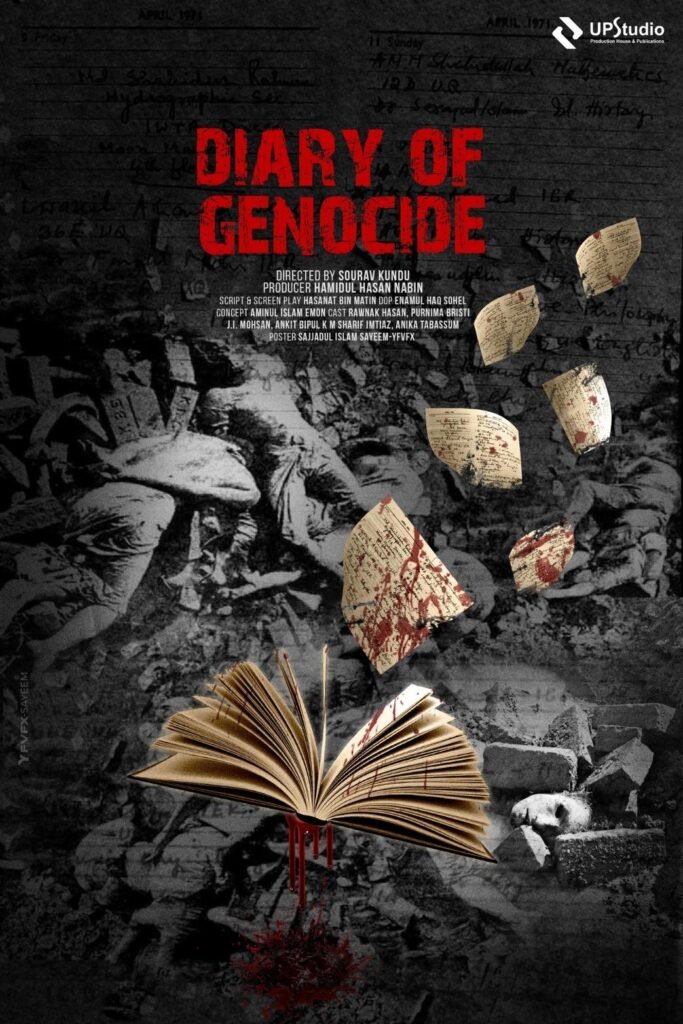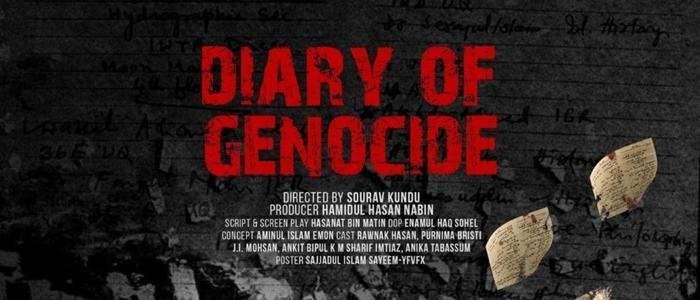M Husain –
“Diary of a Genocide” is a short film based on the historic incident of the liberation war in Bangladesh. On 14th December 1971 when Pakistan’s defeat was absolute, they made a heinous plan to kill intellectuals of Bangladesh (then East Pakistan) to break the educational backbone of the nation and make it intellectually paralyzed. They killed more than a thousand intellectuals with made-up plans and blueprints.
However, most of us do not know how these intellectuals were killed or dragged away from their home. This film is a visual representation of this less-known piece of history which has made it quite different and attractive to watch. It has even created an urge among the audience to know more about history.

The 4 minutes and 26 seconds long film starts with a scene where some collaborators were creating plots to cripple the Bengali nation by killing the intellectuals. Simultaneously an intellectual was writing something on a typewriter in his residence. The scenes had a touch of old times as typewriter, radio, clothes, etc. portrayed a visual representation of 1971. Dialogues and movements of people provided a touch of what happened on 14th December.
Actor Rawnak Hasan played the role of the intellectual journalist and author Shahidullah Kaiser. Purnima Bristi played the role of his wife Panna Kaiser. They both did proper justice to their characters with the portrayal of concerns, fear, helplessness, and emotions as if they were present in that situation. Impact, significance, and skills in group acting were noteworthy too where a set of the secret meeting of Rajakar, Al-Badr was conducted.
Dialogues were loud and clear. Hatred, anger, and jealousy could be felt in the dialogues of Rajakar and Al-Badr while patriotism, honesty, kindness, sense of responsibility was seen in Shahidullah Kaiser and his wife. A soothing background voice describing the history with ease would certainly attract people’s attention.
The movie set was decorated thinking about a concept of a room in the 1970s. Simplicity, a touch of culture, tradition, technology, and frugality were seen too. The effort was seen in making a set similar to a room for a secret meeting.
Editing showed signs of skills. To be able to cover scenes from different situations and make them understand in a short time is praiseworthy. The effect of lighting and shades was good too.
Background music always plays an important role to describe any situation. The music of the radio, the noise of opening doors, sound of arguments of people intensified the pleasure of watching the film.
Aminul Islam Emon’s creative concept was brilliantly carried forward with Hasant Bin Matin’s script as well as the screenplay. With the vision and support of Producer Hamidul Hasan Nabin and UPStudio Production House and Publications, Director Sourav Kundu was able to give it a proper visual touch so imagination could transform into real-life images. To be able to make people understand in a such short time what the gist and vision of the film were praiseworthy.
The IT factor in this film would be clear visualization of a historic horror night in such a short time and a message of what harm was done to us.
You can watch “Diary of a Genocide” from the following youtube link:
https://www.youtube.com/watch?v=AzgE3y0qE_Q&t=1s



